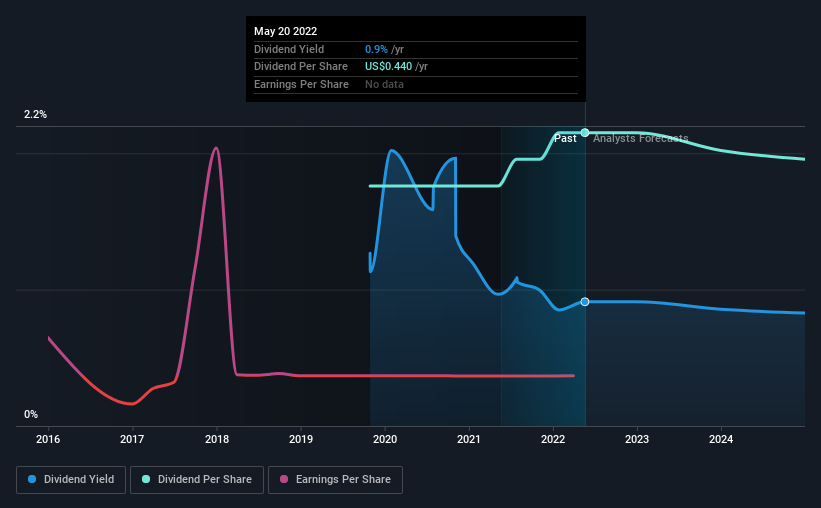Four Days Left To Buy Cactus, Inc. (NYSE:WHD) Before The Ex-Dividend Date
Cactus, Inc. (NYSE:WHD) stock is about to trade ex-dividend in 4 days. Typically, the ex-dividend date is one business day before the record date which is the date on which a company determines the shareholders eligible to receive a dividend. The ex-dividend date is of consequence because whenever a stock is bought or sold, the trade takes at least two business day to settle. This means that investors who purchase Cactus' shares on or after the 26th of May will not receive the dividend, which will be paid on the 16th of June.
The company's next dividend payment will be US$0.11 per share. Last year, in total, the company distributed US$0.44 to shareholders. Based on the last year's worth of payments, Cactus stock has a trailing yield of around 0.9% on the current share price of $48.29. If you buy this business for its dividend, you should have an idea of whether Cactus's dividend is reliable and sustainable. We need to see whether the dividend is covered by earnings and if it's growing.
View our latest analysis for Cactus
Dividends are typically paid out of company income, so if a company pays out more than it earned, its dividend is usually at a higher risk of being cut. That's why it's good to see Cactus paying out a modest 40% of its earnings. That said, even highly profitable companies sometimes might not generate enough cash to pay the dividend, which is why we should always check if the dividend is covered by cash flow. Dividends consumed 51% of the company's free cash flow last year, which is within a normal range for most dividend-paying organisations.
It's positive to see that Cactus's dividend is covered by both profits and cash flow, since this is generally a sign that the dividend is sustainable, and a lower payout ratio usually suggests a greater margin of safety before the dividend gets cut.
Click here to see the company's payout ratio, plus analyst estimates of its future dividends.
Have Earnings And Dividends Been Growing?
Businesses with shrinking earnings are tricky from a dividend perspective. If business enters a downturn and the dividend is cut, the company could see its value fall precipitously. Cactus's earnings have collapsed faster than Wile E Coyote's schemes to trap the Road Runner; down a tremendous 69% a year over the past five years.
The main way most investors will assess a company's dividend prospects is by checking the historical rate of dividend growth. In the last three years, Cactus has lifted its dividend by approximately 6.9% a year on average.
To Sum It Up
Has Cactus got what it takes to maintain its dividend payments? Earnings per share have fallen significantly, although at least Cactus paid out less than half of its profits and free cash flow over the last year, leaving some margin of safety. All things considered, we are not particularly enthused about Cactus from a dividend perspective.
So if you want to do more digging on Cactus, you'll find it worthwhile knowing the risks that this stock faces. In terms of investment risks, we've identified 2 warning signs with Cactus and understanding them should be part of your investment process.
Generally, we wouldn't recommend just buying the first dividend stock you see. Here's a curated list of interesting stocks that are strong dividend payers.
Have feedback on this article? Concerned about the content? Get in touch with us directly. Alternatively, email editorial-team (at) simplywallst.com.
This article by Simply Wall St is general in nature. We provide commentary based on historical data and analyst forecasts only using an unbiased methodology and our articles are not intended to be financial advice. It does not constitute a recommendation to buy or sell any stock, and does not take account of your objectives, or your financial situation. We aim to bring you long-term focused analysis driven by fundamental data. Note that our analysis may not factor in the latest price-sensitive company announcements or qualitative material. Simply Wall St has no position in any stocks mentioned.

 Yahoo Finance
Yahoo Finance 
